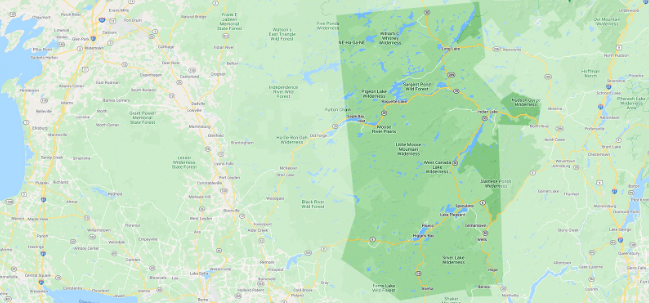Don't be afraid of the name. This short hike is an excellent destination hike for the entire family. This hike is part of the Waterfall Challenge.
Key takeaways
- Distance: 0.6 miles round trip
- Elevation gain: 20 feet
Hiking to Death Falls
This trail, while quite short, is an excellent destination. From the barrier, walk on a perfectly flat trail to a grass clearing. Cross this clearing to the other side. The trail is a straight shot to the falls now. At this point you should be able to hear the water pouring to the rocks below. You will have a small stream crossing to where you will be able to see the falls to the right.
Death Falls is a wide fanning cascade where in the spring or after a heavy rain spell, rainbows often develop. Use this area at the base of the falls to do some photography, but be aware that the rocks along the brook are very slippery and loose.
Death Fall in the winter
This would be a very short snowshoe or winter hike. The stream below the falls can very slippery, but the ice formations on a nice cool day are very nice. This trail is not a great spot for cross-country skiing due to its short distance, but it surely could be used as a place to learn. It's important to be prepared for any winter hike.
Experience more trails in Hamilton County
Looking to find some more trails to hike in Hamilton County? With hundreds of miles of trails, we can help find more amazing hikes for you in the big outdoors.
Birding
Passing by the gate you will be on an old access road that brings you through a grass field with an attractive wetland to your left. As you continue near the wetland, there are a few small areas that you can approach the shore, but don't get too close; the edges are a bit unstable in parts. This opens up great opportunities for birding and wildlife photography. Not only are the falls there most spectacular in spring, this is a time for the many migratory passerines and songbirds in this ecosystem to appear with the turn of the seasons.
How to get there
From Blue Mountain Lake, follow Route 28 toward Raquette Lake for just under 10 miles to the trailhead. This trailhead is located on the left about 0.3 miles past the entrance to Golden Beach Campground. Look for a metal gate across a dirt access road. There is room for a few cars on the side of the road with the trail and an additional pull-off on the opposite side of Route 28. New signs on Route 28 mark the trailhead.






